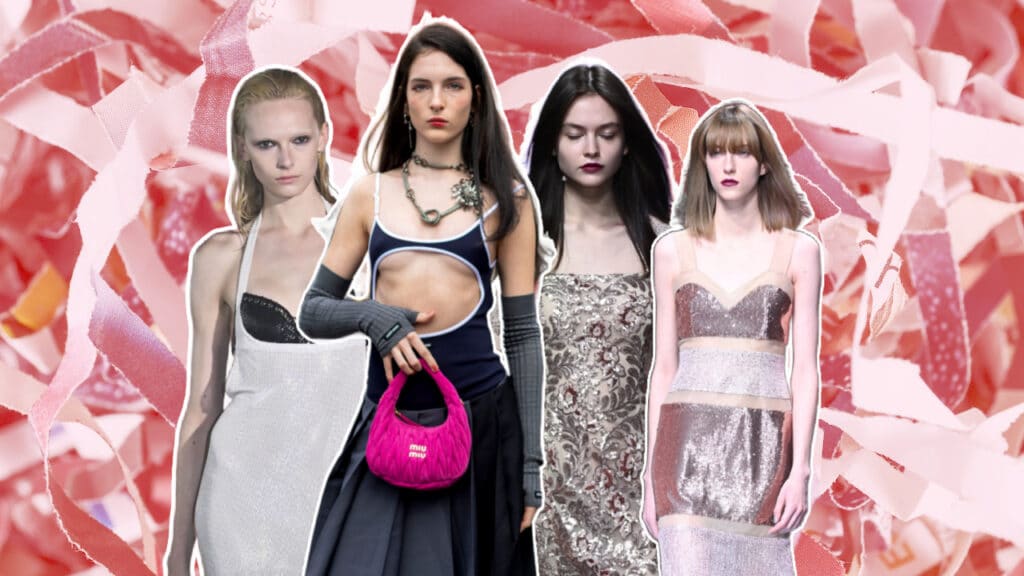High Fashion, Ancestral Roots: The Latina Designer Who Made Shipibo-Konibo Style a Coachella Standout
When Peruvian cumbia legends Los Mirlos stepped onto the Coachella stage this year, it wasn’t just an iconic moment in music history. It was a fashion statement rooted in resistance, and in the vision of Alessandra Durand, a Latina designer, who reshaped how Indigenous art is seen on the world stage.
A Latina Designer Who Made Shipibo-Konibo Tradition Shine
For Durand, founder of the sustainable fashion brand Kené Kaya, the moment felt like a dream come true. “Seeing Los Mirlos take the Coachella stage wearing ancestral designs and beadwork rooted in their tradition was more than just a fashion moment—it was an act of cultural visibility, pride, and resistance,” she told FIERCE.
Furthermore, the looks weren’t just eye-catching. They carried generations of Shipibo-Konibo spiritual and visual language, transformed into stage-ready high fashion. And for the first time in Coachella’s history, a Peruvian band was part of the lineup.

From Cantagallo to Coachella: A Bold New Fashion Narrative
As Durand explained, she didn’t come from fashion’s usual inner circles. “The fashion industry in Peru has long been colonialist in nature—dominated by a small elite. And often marginalizing the very artisan communities whose heritage and artistry brands superficially celebrate.”
This way, she added that Cantagallo, a Shipibo-Konibo community in central Lima, has long been overlooked. Yet it’s home to extraordinary artists and visionaries, many of whom fled the Peruvian Amazon in search of opportunity. “When I say ‘high fashion can also be born in Cantagallo,’ I mean it literally and symbolically,” Durand said. “Their originality has always existed—it just hasn’t always been recognized.”

The Importance of History, Music, and Community
Similarly, Durand, Los Mirlos’ manager, and the Shipibo-Konibo collective Shinan Imabo co-created the wardrobe together. It began with a deep dive into Los Mirlos’ 50-year legacy, encompassing album covers, aesthetics, colors, and conversations with the son of band founder Don Jorge Rodríguez.

“We chose a more visually impactful form of kené known as xao kené for stage visibility,” Durand explained. She worked hand-in-hand with artisans to integrate geometric beadwork and vivid colors—like papaya orange and jungle green—rooted in Amazonian culture and the band’s retro ‘70s vibe.
The result? A multi-sensory, multi-generational masterpiece that blended cumbia with Indigenous design.

This Latina Designer Used Fashion to Disrupt the Coachella Aesthetic
At a festival where Mugler, Marni, and luxury houses dominate, Los Mirlos stood apart. “Their look came from somewhere deeply authentic—not just a trend, but a living cultural legacy,” Durand said. That authenticity challenged norms and sparked conversation.

“Fashion doesn’t need to be divorced from community or culture to be high-impact,” she added. “On the contrary, it’s those connections that give it soul.”
What’s more, their appearance, woven with memory, music, and ancestral power, was more than a fashion win—it was a reminder of who gets erased and who gets centered.

A Documentary Is Capturing the Journey From Lima’s Margins to the World Stage
Finally, Durand is releasing a mini-documentary that traces the creative process—from the heart of Cantagallo to Coachella’s global spotlight. The film follows artisans whose craft is passed down through generations and brings viewers into the home of Don Jorge Rodríguez, where a family museum honors Los Mirlos’ legacy.

“This documentary is about disrupting the pattern that keeps Indigenous art on the margins,” Durand told FIERCE. “It’s about saying: Indigenous art belongs here. On the world’s biggest stages—not as a trend, but as a legacy.”

What This Latina Designer Wants Young Indigenous Girls to Know
When asked what she’d tell a young girl dreaming of a future in fashion, Durand didn’t hesitate. “You belong here,” she said. “Even if the industry doesn’t reflect your face or your story—that doesn’t mean you’re not meant to be part of it.”
In the end, Durand built what didn’t yet exist. Now she’s lighting the way for others to take up space. “Your roots are not a limitation—they’re your superpower,” she said. “Create your own tables. Build what you dream.”




